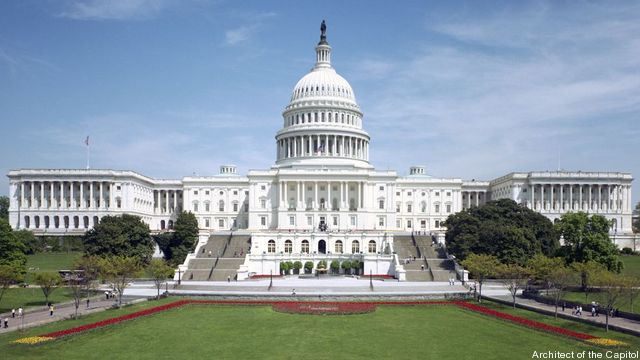Congress Halts F-35 Turkey Transfers, Punts On Space Force
Posted on
 CAPITOL HILL: The Senate and House have come together on a $716 billion defense spending report that would prohibit the transfer of F-35 jets to Turkey, expand American aid to Asian allies to counter China and add ships and other technology funding lines above the White House request.
CAPITOL HILL: The Senate and House have come together on a $716 billion defense spending report that would prohibit the transfer of F-35 jets to Turkey, expand American aid to Asian allies to counter China and add ships and other technology funding lines above the White House request.
The National Defense Authorization Act Report was hashed out in a joint House/Senate conference committee over the past three weeks, with the goal of having the House vote on it this week, with the Senate to follow in August, Hill aides said Monday.
The language on Turkey will likely anger Ankara, which plans to buy the Russian-made S-400 air defense system despite loud objections from fellow NATO members who say that the system will compromise the alliance’s security. The purchase from Russia is also putting Turkish participation in the F-35 program in jeopardy, as Congress is ready to stop all deliveries of the plane to Turkey.
“We’re trying to make a point that is broader than just the F-35,” said one aide, adding that the report is “taking a look at all of the major FMS sales pending with Turkey, and requires an assessment of the overall U.S. strategic relation with Turkey.”
The two houses of Congress have also come to an agreement that countries must show a path toward breaking their military relationship with Moscow before being granted a waiver, while continuing the ban on any military-to-military interactions between the United States and Russia. That one seems aimed straight at Turkey and at India, which continues to buy considerable amounts of Russian hardware.
The report also prohibits any U.S. government agency from using technology produced by the Chinese companies Huawei and ZTE, and bars any person or company who does business with the U.S. government from using technology from the two companies, which have ties to Chinese intelligence services. In an attempt to do for allies in Asia what the Pentagon has done in Europe to counter Russia, the document also requires the Secretary of Defense to submit a five-year plan for an “Indo-Pacific Stability Initiative” to provide additional forces, infrastructure, and logistics capabilities in the Indo-Pacific region.
The conference report funds two more Virginia-class submarines than the White House requested, and adds $250 million in funding to bolster the submarine industrial base. The report also tacks on a third aircraft carrier to the two requested by the White House, along with two more Littoral Combat Ships, calling for the Navy to build 13 new ships, as opposed to the 10 hulls the White House had requested. It also authorizes advanced procurement for the Navy’s nascent frigate program.
There is also more money for research on hypersonic weapons and missile defense systems, both newly urgent priorities for the Pentagon as it rapidly shifts to what it says is an era of great power competition with Russia and China, while trying to stay ahead of ballistic missile threats from North Korea and Iran.
When it comes to the much-touted Space Force, the report asks the defense secretary to submit a plan on how the Pentagon would handle joint warfighing requirements for any potential space force, but refuses to add funds to jumpstart the force. President Trump, of course, told the Defense Department to put together a Space Force, seemingly unaware or uncaring that only Congress can do so, since it would be a new service and its Title 10 responsibilities must be spelled out in law. This is a significant signal from the Senate to Trump and to Rep. Mike Rogers, chair of the House Armed Services strategic forces subcommittee, that it is not yet ready to swing its might behind the new service. To be fair, Rogers had not gone as far as did Trump, pressing only for a carved out force within the Air Force, not a new service as Trump demanded.
The report also gives the green light to the Trump administration’s ask for so-called low yield nuclear weapons, but requires that the program be assessed and reauthorized by Congress each year.
It also prohibits the Air Force’s planned retirement of three JSTARS surveillance planes per year, and requires they be upgraded while a replacement aircraft is readied.
A helpful footnote: although the Pentagon almost always respects language in the NDAA report, it does have not the force of law, as does the National Defense Authorization Act.
Subscribe to our newsletter
Promotions, new products and sales. Directly to your inbox.
